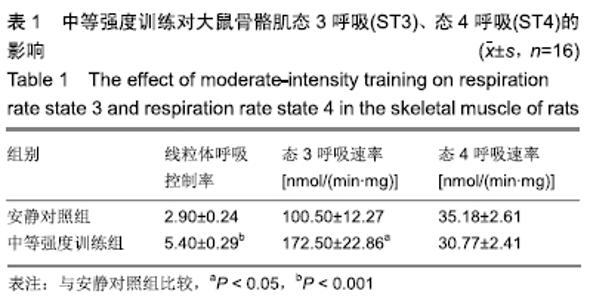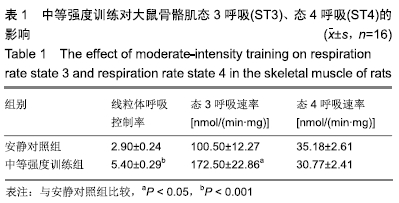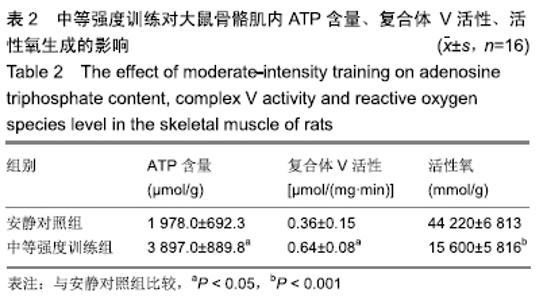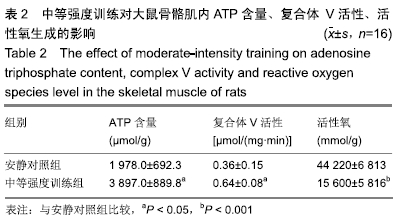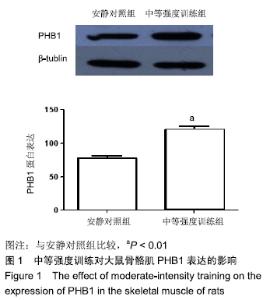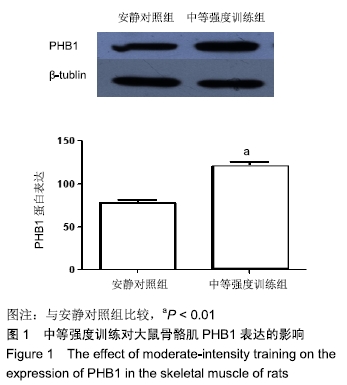[1] HERST PM, ROWE MR, CARSON GM, et al. Functional Mitochondria in Health and Disease.Front Endocrinol (Lausanne). 2017;8:296.
[2] 文宇桥,李晨,宋关兵,等.细胞间线粒体转运的研究进展[J].生物化学与生物物理进展,2019,46(1):14-20.
[3] HOOD DA, UGUCCIONI G, VAINSHTEIN A, et al. Mechanisms of exercise-induced mitochondrial biogenesis in skeletal muscle: implications for health and disease. Compr Physiol. 2011;1(3):1119-1134.
[4] 钱帅伟,漆正堂,孙易,等.下一个将是谁?--关键信号分子对运动性骨骼肌能量代谢的调控[J].体育科学,2015(7):83-89.
[5] PAPA S. Mitochondrial oxidative phosphorylation changes in the life span. Molecular aspects and physiopathological implications. Biochim Biophys Acta. 1996;1276(2):87-105.
[6] 熊正英,聂玉芝.运动中影响ATP合成因素探析[J].浙江体育科学, 2004,26(6):52-55.
[7] NIJTMANS LG, ARTAL SM, GRIVELL LA, et al. The mitochondrial PHB complex: roles in mitochondrial respiratory complex assembly, ageing and degenerative disease. Cell Mol Life Sci. 2002;59(1):143-155.
[8] ZHOU TB, QIN YH. Signaling pathways of prohibitin and its role in diseases. J Recept Signal Transduct Res. 2013;33(1): 28-36.
[9] OSMAN C, HAAG M, POTTING C, et al. The genetic interactome of prohibitins: coordinated control of cardiolipin and phosphatidylethanolamine by conserved regulators in mitochondria.J Cell Biol.2009;184(4):583-596.
[10] SIEVERS C, BILLIG G, GOTTSCHALK K, et al. Prohibitins are required for cancer cell proliferation and adhesion. PLoS One. 2010;5(9):e12735.
[11] RAJALINGAM K, RUDEL T. Ras-Raf signaling needs prohibitin. Cell Cycle. 2005;4(11):1503-1505.
[12] DUTTA D, ALI N, BANERJEE E, et al. Low Levels of Prohibitin in Substantia Nigra Makes Dopaminergic Neurons Vulnerable in Parkinson's Disease. Mol Neurobiol. 2018;55(1): 804-821.
[13] TOO IHK, BONNE I, TAN EL, et al. Prohibitin plays a critical role in Enterovirus 71 neuropathogenesis.PLoS Pathog.2018; 14(1):e1006778.
[14] BUEHLER U, SCHULENBURG K, YURUGI H, et al. Targeting prohibitins at the cell surface prevents Th17-mediated autoimmunity. EMBO J. 2018;37(16): e99429.
[15] BO H, ZHANG Y, JI LL. Redefining the role of mitochondria in exercise: a dynamic remodeling. Ann N Y Acad Sci. 2010; 1201:121-128.
[16] GU Q, WANG B, ZHANG XF, et al. Chronic aerobic exercise training attenuates aortic stiffening and endothelial dysfunction through preserving aortic mitochondrial function in aged rats. Exp Gerontol.2014;56:37-44.
[17] 郭彦青,张敏,赵晓丽,等.不同运动方式和时间对大鼠骨骼肌线粒体呼吸链复合体酶Ⅰ和Ⅳ活性的影响[J].中国组织工程研究与临床康复,2011,15(2):317-320.
[18] BEDFORD TG, TIPTON CM, WILSON NC, et al. Maximum oxygen consumption of rats and its changes with various experimental procedures. J Appl Physiol Respir Environ Exerc Physiol. 1979;47(6):1278-1283.
[19] 方雯,李泽,刘晓华,等.一次性力竭运动对大鼠PHB1表达及线粒体功能的影响[J].中国应用生理学杂志, 2017, 33(6):544-549.
[20] 侯希贺,张玲莉,李慧,等.运动训练与骨代谢和脂代谢:运动强度和持续时间是影响的重要因素[J].中国组织工程研究,2018, 22(12):1950-1955.
[21] 柳莹,高丽,冯俊荣.线粒体表观遗传学研究进展[J].生物技术通报, 2018,34(1):60-66.
[22] ENRÍQUEZ JA. Supramolecular Organization of Respiratory Complexes. Annu Rev Physiol. 2016;78:533-561.
[23] MITOME N, ONO S, SATO H, et al. Essential arginine residue of the F(o)-a subunit in F(o)F(1)-ATP synthase has a role to prevent the proton shortcut without c-ring rotation in the F(o) proton channel. Biochem J. 2010;430(1):171-177.
[24] NAKANISHI-MATSUI M, KASHIWAGI S, KOJIMA M, et al. Roles of the beta subunit hinge domain in ATP synthase F(1) sector: hydrophobic network formed by introduced betaPhe174 inhibits subunit rotation. Biochem Biophys Res Commun. 2010;395(2):173-177.
[25] BOYLE GM, ROUCOU X, NAGLEY P, et al. Modulation at a distance of proton conductance through the Saccharomyces cerevisiae mitochondrial F1F0-ATP synthase by variants of the oligomycin sensitivity-conferring protein containing substitutions near the C-terminus. J Bioenerg Biomembr. 2000;32(6):595-607.
[26] SUNDBERG TB, NEY GM, SUBRAMANIAN C, et al. The immunomodulatory benzodiazepine Bz-423 inhibits B-cell proliferation by targeting c-myc protein for rapid and specific degradation. Cancer Res.2006;66(3):1775-1782.
[27] OSMAN C, WILMES C, TATSUTA T, et al. Prohibitins interact genetically with Atp23, a novel processing peptidase and chaperone for the F1Fo-ATP synthase. Mol Biol Cell. 2007; 18(2):627-635.
[28] NOWAK G, BAKAJSOVA-TAKACSOVA D. Protein kinase Cε targets respiratory chain and mitochondrial membrane potential but not F0 F1-ATPase in renal cells injured by oxidant. J Cell Biochem. 2018;119(11):9394-9407.
[29] KIM KB, LEE JW, LEE CS, et al. Oxidation-reduction respiratory chains and ATP synthase complex are localized in detergent-resistant lipid rafts. Proteomics. 2006;6(8): 2444-2453.
[30] 陈彩珍,许豪文.长期运动对老年小鼠骨骼肌线粒体复合物的影响[J].现代康复,2000,4(4):568-569.
[31] 李洁,刘西锋.不同海拔高度交替低氧训练对大鼠骨骼肌线粒体呼吸功能的影响[J].中国运动医学杂志, 2017, 36(1):21-25.
[32] VALKO M, LEIBFRITZ D, MONCOL J, et al. Free radicals and antioxidants in normal physiological functions and human disease. Int J Biochem Cell Biol. 2007;39(1):44-84.
[33] ARCOS JC. Ultrastructural alteration of the mitochondrial electron transport chain involving electron leak: possible basis of "respiratory impairment" in certain tumors. J Theor Biol. 1971;30(3):533-543.
[34] 马晓宁.有氧间歇训练对心梗大鼠心肌线粒体呼吸功能的影响[J].天津体育学院学报,2010,25(6):529-532.
[35] 张瑞.不同训练方案对大鼠心肌线粒体呼吸链复合体酶的影响及其机制研究[D].兰州:西北师范大学, 2016.
[36] 黄彩云.不同训练强度对大鼠心肌线粒体呼吸链功能及自由基代谢的影响[D].兰州:西北师范大学, 2013.
[37] BIRNER R, NEBAUER R, SCHNEITER R, et al. Synthetic lethal interaction of the mitochondrial phosphatidylethanolamine biosynthetic machinery with the prohibitin complex of Saccharomyces cerevisiae. Mol Biol Cell. 2003;14(2):370-383.
[38] FUSARO G, DASGUPTA P, RASTOGI S, et al. Prohibitin induces the transcriptional activity of p53 and is exported from the nucleus upon apoptotic signaling.J Biol Chem.2003; 278(48):47853-47861.
|
